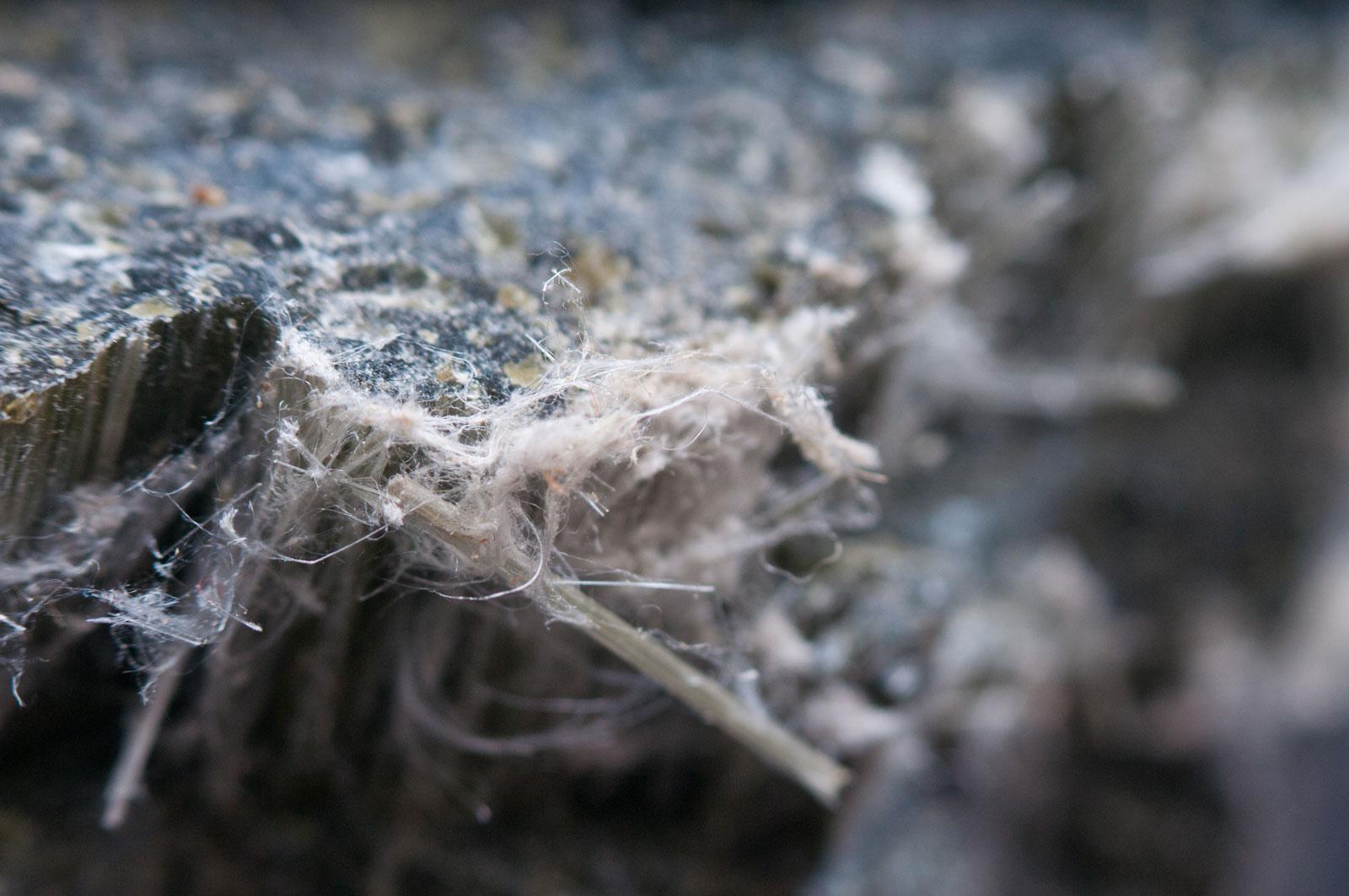Painters should be aware of asbestos. It can be deadly when disturbed. Know what to look for and get a specialist company in to test and remove it if necessary.
Asbestos is, potentially, the silent killer of the decorating trade. It looks and feels harmless, but it is anything but. Breathing in its fibres causes cancer and 5,000 people in the UK who have been exposed to it die in the UK annually.
It has been banned in the construction industry for more than 20 years but it is still found in the fabric of some one million domestic buildings and 300,000 non-domestic ones. The diseases caused by asbestos remain the top workplace killer in this country. Decorators absolutely have to treat it with the utmost caution.
Where asbestos is in place, the danger lies in disturbing it. Left alone, it is normally benign: it is when its fibres start drifting into the air that it becomes potentially deadly.
Painters and decorators working on older properties – and they need not be that old, as it was used in buildings well into the 20th century – have to ensure they don’t expose it and put themselves and those around them at serious risk. There is a legal requirement to identify if asbestos is present before work starts and if it could be disturbed.
The Health and Safety Executive (HSE) ran a campaign, Asbestos and You, warning tradespeople of the personal risks it creates. The HSE points out that there is no known safe level of exposure, but that it can be managed safely.
Asbestos was popular in construction work because of its very effective fire resistance and insulating properties up until 1999, when it was banned for use in new properties.
Most building refurbishment companies are fully aware of the risks when working on modernising older properties and have robust policies to deal with the issue. Painters need to have correct and valid certifications in place when dealing with asbestos.
Sion Morgan is Head of Health and Safety at the Airdrie-based Bell Group, one of the largest property services contractors in the UK. Its range of services include painting.
“We do a lot of work on properties where asbestos is likely to be found,” he explains. “We follow a strict set of protocols to identify possible asbestos-containing materials (ACMs) and their location before starting work.
“We have controls in place to ensure our operatives’ and customers’ health is not affected if we do come across anything. We get a lot of housing stock from the 1940s and 1950s up until the 1980s when asbestos was commonly used in the fabric.”
He explains that asbestos can be encased in anything and everything. “This is reflected in the importance we place on our operatives receiving UKATA (UK Asbestos Training Association) asbestos awareness training. The best mitigation against exposure is understanding the existing information that our customers have on the fabric of the building and where asbestos is likely to be.”
Likely places include roof soffits and fascias, underneath gutters, behind radiators and in service cupboards. “If it doesn’t look like plastic, timber or another commonplace building material and the operatives are unsure, then we treat the material as suspect until it can be tested. We may find it is plasterboard – or it could be asbestos. Caution is key.”
Company staff will often see old paint flaking off soffits, he says. “If they think it is material that contains asbestos, they will stop the work, secure the area and report it.
“We will inform the client and coordinate with them. It may be that the asbestos is left in situ being to a standard as best to be expected without undertaking intrusive surface preparation, or an approved asbestos removal contractor will be engaged prior to Bell Group installing new soffits and fascias.”
Bell Group can often identify asbestos as being likely to be present in a building before remediation work starts by looking at information such as asbestos surveys or original designs. However, with legacy structures, this may not be possible.
If there is any risk, then a specialist subcontractor is used to carry out tests in an enclosed and safe environment. “Sample analysis will be carried out. We can then put an adequate, safe plan in place.” It may be, Sion adds, that it can be left in place so long as it is not disturbed.
In general, the construction industry has long moved towards what is known as encapsulation – putting a false wall in front of the asbestos, for example – or complete removal by experienced and dedicated contractors.
Certainly, no one can afford to treat the discovery of asbestos with anything other than the utmost seriousness. As the Scottish-based specialist removal company Strada Environmental points out, it is “extensively hazardous” and there is no accepted safe level of exposure.
“Even a very few fibres in the environment can be inhaled by people and can cause tremendous damage to their health, inducing diseases like asbestosis, mesothelioma and lung cancer,” it says on its web site. “Currently, there is not one treatment for mesothelioma that has resulted in a cure.”
However, Sion believes that more could be done across the building services sector to teach people. “I didn’t learn about asbestos until I was probably in my early 20s. Perhaps it could be included as part of the education system for the younger generation.
“As an industry, we’ve implemented really good measures to ensure that our guys and girls are aware of asbestos and the risks involved. But I think we could perhaps share that knowledge with the wider population outside of the construction industry.”

